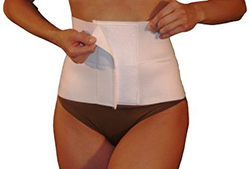Presbyopia Treatment
-
Content written by Annie Tye, Ph.D | Reviewed by Joseph Christenbury, M.D. | Last updated 6/11/2023
- Overview
Overview
What is presbyopia?
Presbyopia is an eye condition in which decreased flexibility of the lens of the eye makes focusing at short distances more difficult. It is one of the more common vision problems causing people usually over 45 to need vision correction.
Cost of presbyopia correction
 The cost of presbyopia correction varies widely depending on the treatment used.
The cost of presbyopia correction varies widely depending on the treatment used.
- Eyeglasses: $100 to $250
- Contact Lenses: $250 – $1,500 per year (Depends on brand, type, insurance coverage)
- Monovision LASIK: $2,000 per eye
- Corneal Inlays: $4,000 to $5,000 per eye
- Conductive Keratoplasty: $1,500 to $2,500 per eye
- Refractive Lens Exchange (RLE): $2,500 to $4,500 per eye
Are you a candidate?
You may be a good candidate for presbyopia correction if you are an adult over the age of 45 who has been diagnosed with presbyopia. Your eye doctor can accurately diagnose presbyopia through a complete eye exam and will make a recommendation as to the best treatment option for you.
Presbyopia treatment options
Some popular treatment options for presbyopia correction include:
- Eyeglasses: This is the most common treatment for presbyopia.
- Contact Lenses: Multifocal and monovision contact lenses are also very common presbyopia treatments.
- Monovision LASIK: A procedure that corrects the dominant eye for distance vision while leaving the less-dominant eye nearsighted.
- Corneal Inlays: A corneal inlay device is implanted into the center of the cornea, which creates a pinhole effect. This pinhole effect allows the patient to have a greater range of near vision.
- Conductive Keratoplasty: Also called NearVision CK, this procedure uses a handheld probe that sends radio waves to targeted spots on the cornea to adjust its shape.
- Refractive Lens Exchange (RLE): Surgeon removes the eye’s natural lens with similar methods and instruments as cataract surgery, replacing it with an artificial lens (known as an intraocular lens implant or IOL) to improve the eye’s focusing abilities and give the patient improved vision at near.
Safety information
Some common risks associated with presbyopia procedures include:
- Infection
- Dry eye
- Blurry vision
- Glare and halos, especially at night
- Reduced depth perception
- Double vision
Be sure to speak with your doctor about all the potential risks and side effects before any type of treatment.
Recovery time
Recovery time will depend on the treatment option.
For presbyopia procedures, patients should expect the recovery time to be one to several weeks. During this recovery period, it is important to avoid doing anything that might irritate the eyes, such as contact sports, swimming or other activities that risk trauma to the eye. You may also need to avoid driving for the first several days.
After undergoing a procedure, you can expect some vision disruptions such as blurriness, halos around lights, and poor night vision. Your vision should continue to improve in the weeks and months following surgery.
To learn more about presbyopia, visit the American Academy of Ophthalmology (AAO) website.
EnhanceMyself.com relies on sources such as professional medical organizations, government agencies, academic institutions, and peer-reviewed scientific journals to write it’s articles. Learn more about how we ensure our content is accurate, in-depth, and unbiased by reading our editorial guidelines.
*Medical Disclaimer: This website does not provide medical advice. Read more.




